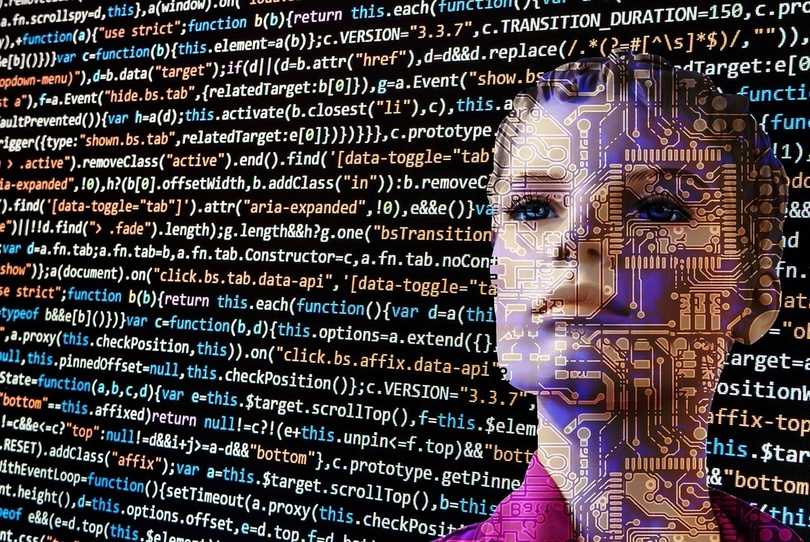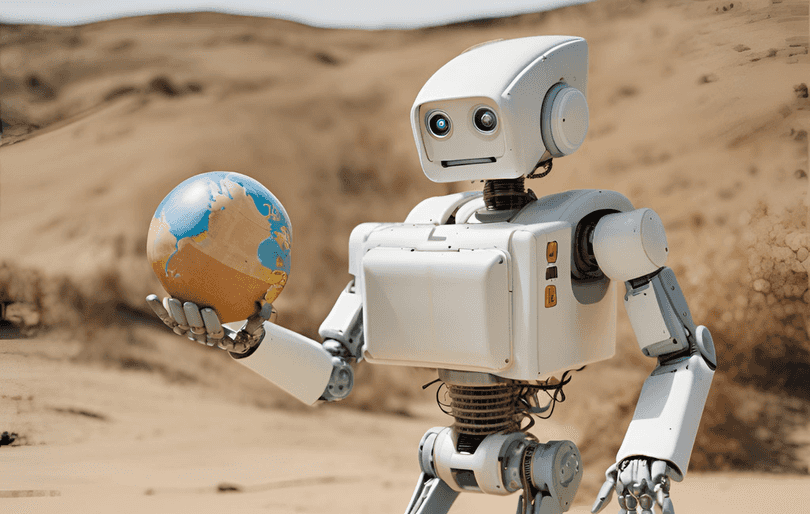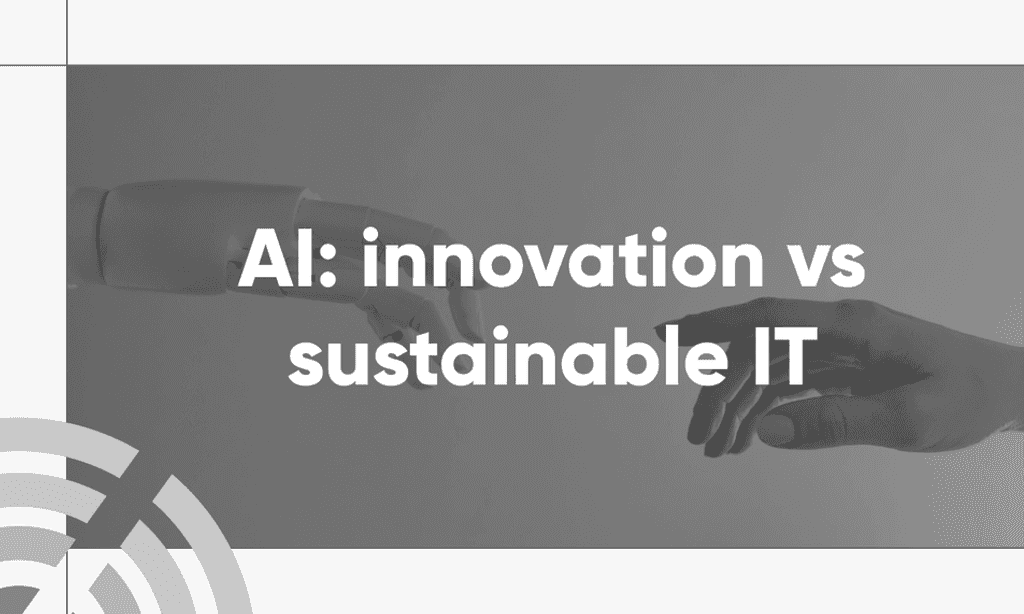The advent of generative artificial intelligence, defined as a computer program capable of creating new data from learned models, has revolutionized various fields. From translation or note-taking software to music or movie recommendation algorithms, through virtual assistants such as Siri or Alexa, its influence is ubiquitous. Not to mention the presence of ChatGPT, which has rocked the world within a year.
But this growing importance raises many concerns about its impact on digital sobriety. This innovation, although offering unprecedented possibilities, seems to contradict efforts to promote digital sobriety and jeopardizes the Green IT strategies of IT Directors. And it is at this intersection that a question arises: can we really reconcile responsible digital approach and artificial intelligence in an increasingly digitized world?
AI : Progress in the digital era
Artificial Intelligence (AI), particularly in its generative form, is now emerging as an essential catalyst for innovation. At the heart of this revolution? Directors, managers, and team leaders, who find themselves faced with the need to adopt and adapt to these changes to remain competitive. It must be said that the capabilities of generative AI extend across a multitude of domains: whether in artistic creation, product design, solving complex problems or generating content, this technology pushes the boundaries of what was once considered possible.
Generative AI offers many advantages:
- Promotes creativity by quickly exploring various possibilities
- Generates solutions to complex problems
- Reduces costs by automating repetitive tasks, and could even reduce companies' operational costs by 25 to 35% by 2025 (BPI)
- Allows teams to focus on strategic aspects. According to McKinsey, 73% of companies have seen an improvement in work quality thanks to AI.
- Values human skills (for 85% of leaders according to Accenture)
- Allows companies to innovate more quickly and efficiently
- Is a proactive response to the changing needs of the market and consumers.
But behind all these promises of changes and evolutions lurk significant risks. The overuse of generative AI can lead to unforeseen consequences and ethical challenges, creating an absolute urgency for companies to take control of their digital strategy.

Impact of generative AI on a human scale
Companies' interest in major AI advances, despite the environmental impact, is worrying. Organizations are torn between a need for sustainability and the race to have the most powerful AI. The lack of financial incentives to adopt green practices means that companies are not addressing this issue enough. At this frontier, two major categories of impact stand out.
Environmental impacts: when ambition exceeds resources
Generative AI is energy-hungry, a need that poses a significant sustainability problem. And the machine doesn't seem to be slowing down! In its 2024 report, the International Energy Agency predicts a rise in energy demand for AI and cryptocurrencies of more than 30% by 2026.
These tools require many energy-intensive graphics cards and data centers that have a high need for electricity (often from fossil sources) and enormous amounts of water for cooling. The graphics processors (GPUs) used for AI consume four times more energy than those used for traditional cloud applications. In fact, AI could soon consume as much electricity as Ireland! For proof, a study by the University of California shows that training ChatGPT 3 would have required 5.4 million liters of water, with each conversation adding 50 centiliters.
As for CO2 emissions, most AIs produce between 1 and 20 tons, just for their training. For OpenAI, with 100 million users per week, this figure rises to 552 tons with ChatGPT 3, equivalent to the annual emissions of 55 people in France.
Human and robot, from screen to conflict
Generative AI is not only useful for chatbots or text creation. It impacts a large part of the intellectual tasks performed by humans in companies, affecting sectors such as content creation, information research, and even art.
The subject has become complex and has emerged on the market "overnight". There is a growing need for training for employees, as companies demand to be constantly informed and up-to-date on the subject. Unfortunately, this increased need for knowledge could deepen the digital divide and risk exacerbating social inequalities.
In addition, ethical concerns related to automated content creation and potential economic and social imbalances due to the ubiquity of generative AI are increasingly present. There is also a risk of large-scale disinformation, as generative AI could lead us into a post-truth era, posing real risks for organizations, companies, and governments.
Most of the intellectual tasks in any organization currently performed by humans will eventually be impacted, far beyond tasks like content creation that we observe today. This offers immense opportunities to transform white-collar productivity for organizations that can exploit it. However, it also raises crucial questions about environmental and social responsibility. Reconciling generative AI with a responsible digital strategy poses a major challenge for our society, as a new civilization can only be fully envisaged if it is sustainable for our planet.

How to reconcile AI and sustainable IT ?
While technological innovation struggles to rhyme with preserving our planet's resources, companies are called upon to reconcile artificial intelligence and digital sobriety strategy. This integration is not only crucial to meet current environmental imperatives but also to guard against future laws and regulations that will adjust the AI framework in the future. Thus, to reconcile the two subjects, companies must adopt a proactive and responsible approach.
Optimize algorithms
By developing and employing more efficient and less resource-intensive algorithms, it is possible to reduce the energy consumption of generative AI. Investments in research and development of optimization techniques are imperative and could enable companies to minimize the environmental footprint of their AI applications.
Use renewable energy sources
Here, we are talking about rethinking the use of energy sources by turning to renewable ones, such as solar, wind, or hydraulic energy to power data centers and IT infrastructures used for generative AI. A sustainable means to enable companies to reduce their environmental impact and contribute to the transition to a more sustainable economy.
Recycle and reuse components
Promoting recycling and the reuse of electronic components and IT infrastructures is an alternative to reduce the consumption of natural resources needed to manufacture new equipment.
Raise awareness
A major challenge is to raise awareness among developers, companies, and the general public about the environmental issues related to the subject. By providing training and resources on best practices in sustainable development, companies can encourage the adoption of eco-responsible solutions and promote the ethical use of technology.
The rise of artificial intelligence gives technology giants and other industries phenomenal and almost incomprehensible power, often in stark contrast to their ecological convictions. This contradiction underlines the need for a deeper awareness of the issues related to our dependence on these technologies. However, in this race for technological domination, there will be no slowdown, let alone a stop, as long as a widespread awareness of these problems is not achieved and concrete measures are not implemented to regulate this resource consumption. And it is the role of regulators to assume responsibilities by establishing a legislative framework around the creation and use of generative AIs.
